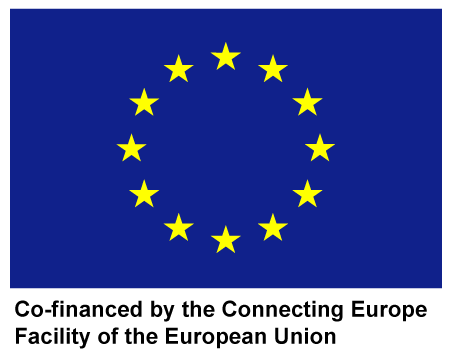
Cooperative Urban
Mobility Portal
Explore Connected and Cooperative Mobility

Cooperative
Urban Mobility Portal
Explore Connected and Cooperative Mobility
What is C-ITS
C-ITS stands for Cooperative Intelligent Transport Systems (also referred to as cooperative systems). This is defined as a group of technologies and applications that allow road users to exchange data with each other and the surrounding digital road infrastructure through wireless communications.
Communication can happen between vehicles (vehicle-to-vehicle or V2V), vehicles and road infrastructure (V2I or I2V), vehicles and other (vulnerable) road users such as pedestrians, cyclists or motorcyclists (vehicle-to-everything or V2X), and between elements of the road infrastructure (infrastructure-to-infrastructure or I2I), such as traffic lights, cameras, sensors, variable message signs (VMS), traffic information centres (TMC).
This digital connectivity enables a wide range of information and cooperation services that allow road users and traffic managers to interact and coordinate their actions, helping them to take the right decisions and to adapt to the traffic situation.
To learn more about C-ITS, you can watch the video here aside or visit the Library page, where you will find additional video tutorials and information.
How can C-ITS improve mobility of people and goods
The benefits of C-ITS services for mobility can be described as follows:
- Safety:
- Reducing the number of fatalities
- Reducing the number and severity of collisions
- Operational efficiency:
- Improving traffic flow (by increasing road capacity and postponing its physical expansion)
- Reducing traffic congestion and disruption due to incidents
- Reducing travel times for all road users
- Improving transport planning and management (travel time reliability)
- Improving the Level of Service and convenience provided to travellers
- Reducing costs incurred by fleet / transport operators
- Mobility & comfort:
- Providing the tailored alerts about road conditions and traffic / routing information
- Improving the safety and security of the travel
- Enriching the travel experience and comfort, while reducing the traveller stress
- Improving city liveability (transport accessibility, sustainability and equity)
- Environment:
- Reducing pollutant and greenhouse gases emissions
- Reducing energy and fuel consumption
- Reducing overall noise emissions
A clear understanding of the benefits of C-ITS is a crucial step in justifying any investment in such solutions as compared to traditional ones, like building new infrastructures and paving more asphalt. An exact estimate of such benefits is not given here because it depends on many influencing factors.
In general, a C-ITS service can impact more than one area. When combined, different services have a higher impact as compared to the same services stand-alone. In the frame of CO-UMP, the provision of multiple C-ITS services, also known as services bundling, is considered according to two main impact areas: safety and efficiency. Bundles have been developed and are provided in the form of an open, modular, extendable App bringing together a complete suite of C-ITS services adaptable to the user needs and context / environment.
To learn more, please take a look at the Services and/or the Urban Deployments of your interest by following the links at the top of this page.



This website has received funding from the European Union’s Horizon 2020 Research and Innovation Programme
under Grant Agreement number 723311.
